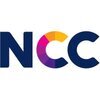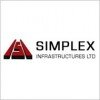Filter interviews by
Kaizer Construction Company Graduate Engineer Trainee (Get) Interview Questions and Answers
Kaizer Construction Company Graduate Engineer Trainee (Get) Interview Experiences
1 interview found
I applied via Naukri.com and was interviewed in Apr 2023. There were 2 interview rounds.

(3 Questions)
- Q1. What is the M20 Ratio ?
- Ans.
M20 ratio refers to the mix ratio of concrete where M denotes mix and 20 represents the compressive strength of concrete in N/mm^2 after 28 days.
M20 ratio is commonly used in construction for making concrete structures.
It consists of 1 part cement, 1.5 parts sand, and 3 parts aggregate.
For example, a mix of 1:1.5:3 means 1 part cement, 1.5 parts sand, and 3 parts aggregate.
The M20 ratio results in a concrete mix with a...
- Q2. 1:1.5:3 cement sand aggregate
- Q3. Types of Cement
- Ans.
Types of cement include Portland cement, white cement, rapid hardening cement, and low heat cement.
Portland cement is the most common type used in construction.
White cement is used for architectural purposes.
Rapid hardening cement sets quickly and is used in projects with tight deadlines.
Low heat cement generates less heat during hydration and is used in large concrete structures.
Interview Preparation Tips
- Construction
- cement
Top trending discussions






Interview questions from similar companies

Graduate Engineer Trainee (Get) Interview Questions & Answers
Worleyposted on 5 Dec 2024
I applied via campus placement at BRACT's Vishwakarma Institute of Information Technology, Pune and was interviewed in Nov 2024. There were 3 interview rounds.
Basic Aptitude Questions Reasoning & Verbal Ability
How is culture at IT Industries
(12 Questions)
- Q1. What are the tensile forces acts on material
- Ans.
Tensile forces are forces that stretch or pull materials apart.
Tensile forces act in the opposite direction of compressive forces
Examples of tensile forces include stretching a rubber band or pulling on a rope
Tensile strength is a measure of a material's ability to withstand tensile forces
- Q2. Write all formulas you know of Fluid Mechanics
- Ans.
Formulas in Fluid Mechanics
Bernoulli's equation: P + 0.5ρv^2 + ρgh = constant
Continuity equation: A1v1 = A2v2
Navier-Stokes equation: ρ(∂v/∂t + v∇v) = -∇P + μ∇^2v + ρg
Ideal gas law: PV = nRT
Poiseuille's Law: Q = πr^4(ΔP)/(8ηL)
- Q3. Laws of thermodynamics
- Ans.
The fundamental laws of thermodynamics govern the behavior of energy in systems.
First Law of Thermodynamics: Energy cannot be created or destroyed, only transferred or converted.
Second Law of Thermodynamics: The entropy of an isolated system will always increase over time.
Third Law of Thermodynamics: As temperature approaches absolute zero, the entropy of a system approaches a minimum value.
Examples: A car engine conve...
- Q4. What is Fouriers Law write its equation
- Ans.
Fourier's Law describes the flow of heat through a material.
Fourier's Law states that the rate of heat transfer through a material is directly proportional to the negative gradient of temperature and the area perpendicular to the direction of heat flow.
The equation for Fourier's Law is q = -k * A * (dT/dx), where q is the heat transfer rate, k is the thermal conductivity of the material, A is the cross-sectional area, ...
- Q5. Explain Iron Carbon phase diagram
- Ans.
The Iron-Carbon phase diagram illustrates the phases and microstructures of iron-carbon alloys as a function of temperature and composition.
Shows the phases of iron and carbon at different temperatures and compositions
Includes regions for austenite, ferrite, cementite, and pearlite
Critical points such as eutectic point and eutectoid point are marked
Used to predict the microstructure of steel based on composition and he
- Q6. Stress Strain Curve Explain
- Ans.
The stress-strain curve shows the relationship between stress (force applied) and strain (resulting deformation) in a material.
The curve typically consists of three main regions: elastic deformation, plastic deformation, and fracture.
In the elastic region, the material deforms elastically and returns to its original shape when the stress is removed.
The plastic region is where permanent deformation occurs, but the mater...
- Q7. Calculate SFD & BMD
- Ans.
SFD and BMD are calculated using equations of equilibrium and relationships between load, shear force, and bending moment.
Calculate reactions at supports using equations of equilibrium
Determine the shear force at different points along the beam by considering the applied loads and reactions
Calculate the bending moment at different points by integrating the shear force diagram
Plot the SFD and BMD based on the calculated...
- Q8. How to Calculate velocity of fluid flowing through pipe
- Ans.
Velocity of fluid flowing through a pipe can be calculated using the formula Q = A * V, where Q is the flow rate, A is the cross-sectional area of the pipe, and V is the velocity of the fluid.
Calculate the cross-sectional area of the pipe using the formula A = π * r^2, where r is the radius of the pipe.
Determine the flow rate (Q) of the fluid, which is typically measured in cubic meters per second (m^3/s) or liters per...
- Q9. What is Difference between entropy and enthalpy
- Ans.
Entropy is a measure of disorder or randomness in a system, while enthalpy is a measure of the heat energy in a system.
Entropy is a thermodynamic property that measures the amount of energy in a system that is not available to do work.
Enthalpy is a thermodynamic property that measures the total heat content of a system.
Entropy increases in irreversible processes, while enthalpy remains constant.
Entropy is denoted by S,...
- Q10. Draw Refrigeration Cycle Graph
- Ans.
The Refrigeration Cycle graph shows the process of cooling a space by transferring heat from inside to outside.
The cycle starts with the refrigerant entering the compressor as a low-pressure gas.
The refrigerant is compressed, raising its temperature and pressure, before entering the condenser where it releases heat to the surroundings.
After losing heat, the refrigerant becomes a high-pressure liquid and flows into the ...
- Q11. Draw vapour absorption cycle graph
- Ans.
The vapor absorption cycle graph shows the relationship between pressure, temperature, and enthalpy during the process.
The graph typically shows pressure on the y-axis and temperature on the x-axis.
It includes lines representing the various stages of the cycle such as evaporation, absorption, and desorption.
The enthalpy values at different points in the cycle can also be plotted on the graph.
Example: The graph will sho...
- Q12. Draw Rankine otto & diesel cycle graph
- Ans.
The Rankine, Otto, and Diesel cycle graphs are commonly used in thermodynamics to analyze different types of heat engines.
The Rankine cycle is used in steam power plants and consists of four processes: heat addition, isentropic expansion, heat rejection, and isentropic compression.
The Otto cycle is used in spark-ignition engines and consists of four processes: isentropic compression, constant volume heat addition, isen...
Interview Preparation Tips
- Strength of materials
- Thermodynamics
- Heat Transfer
- Fluid Mechanics
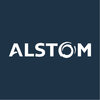
Graduate Engineer Trainee (Get) Interview Questions & Answers
Alstom Transportationposted on 20 Aug 2024
I applied via Campus Placement and was interviewed in Jul 2024. There were 4 interview rounds.
All aptitude, verbal questions
Current affair topics
(2 Questions)
- Q1. Projects based question
- Q2. Favourite subject related questions..decent knowledge on one's core is enough
(2 Questions)
- Q1. Achievements and regrets
- Q2. Family and educational background
Interview Preparation Tips

Graduate Engineer Trainee (Get) Interview Questions & Answers
Tata Technologiesposted on 10 Jun 2024
(2 Questions)
- Q1. Various designs considerations
- Ans.
Design considerations play a crucial role in the success of a project or product.
Consider user experience and usability
Think about scalability and flexibility
Ensure security and privacy measures are in place
Take into account cost and resource constraints
- Q2. Type of defects in plastic
- Ans.
Common defects in plastic include bubbles, warping, sink marks, and flash.
Bubbles: trapped air pockets in the plastic
Warping: deformation of the plastic due to uneven cooling
Sink marks: depressions on the surface caused by uneven cooling or thick sections
Flash: excess material around the edges of the mold
Cad test (surfacing and part modelling)
Interview Preparation Tips

Graduate Engineer Trainee (Get) Interview Questions & Answers
Saint-Gobainposted on 27 Aug 2024
Technical Aptitude on java , .net , and sql
Generative Al . time was 8 minutes and 2 minutes for thinking

Graduate Engineer Trainee (Get) Interview Questions & Answers
Megha Engineering & Infrastructuresposted on 20 Aug 2024
I applied via Campus Placement and was interviewed in Feb 2024. There were 2 interview rounds.
(2 Questions)
- Q1. What is curing ?
- Ans.
Curing is the process of maintaining adequate moisture and temperature for a specific period of time to allow concrete to achieve its desired strength and durability.
Curing helps in preventing the loss of moisture from the concrete, which is essential for hydration to occur.
Proper curing enhances the strength, durability, and overall quality of the concrete.
Common curing methods include water curing, steam curing, and ...
- Q2. What are the dimensions of test cube?
- Ans.
The dimensions of a test cube are typically 150mm x 150mm x 150mm.
Standard dimensions are 150mm x 150mm x 150mm
Used for testing compressive strength of concrete
Can vary based on specific testing requirements
(2 Questions)
- Q1. Explain yourself ?
- Ans.
I am a dedicated and hardworking individual with a passion for engineering and problem-solving.
I recently graduated with a degree in engineering from XYZ University.
I have completed internships at ABC Company where I gained hands-on experience in project management and design.
I am proficient in CAD software and have strong analytical skills.
I am a team player and enjoy collaborating with others to find innovative solut
- Q2. Draw a plan with structural details?
- Ans.
I would draw a plan with structural details including dimensions, materials, and load-bearing elements.
Start by sketching the overall layout of the structure
Include dimensions for each component and the overall structure
Label materials to be used for each element (e.g. steel beams, concrete columns)
Highlight load-bearing elements such as columns and beams
Consider factors like wind load, seismic activity, and live loads
Interview Preparation Tips
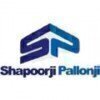
Graduate Engineer Trainee (Get) Interview Questions & Answers
Shapoorji Pallonji Groupposted on 7 Feb 2024
I applied via Campus Placement and was interviewed in Jan 2024. There were 3 interview rounds.
It consists of 25 questions within 25 mins
About some topics like technology on jobs
(2 Questions)
- Q1. What is the full form of CPM and PERT?
- Ans.
CPM stands for Critical Path Method and PERT stands for Program Evaluation and Review Technique.
CPM is a project management technique used to determine the longest path of planned activities to complete a project.
PERT is a project management technique used to analyze and represent the tasks involved in completing a project.
Both CPM and PERT are used to estimate project duration, identify critical activities, and manage...
- Q2. What are the intersted subjects
- Ans.
The interested subjects for a Graduate Engineer Trainee may include engineering fundamentals, mathematics, physics, computer science, and specialized subjects related to the trainee's field of interest.
Engineering fundamentals
Mathematics
Physics
Computer science
Specialized subjects related to the trainee's field of interest
Interview Preparation Tips
- Mechanical Engineering
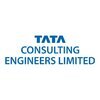
(1 Question)
- Q1. Core questions related to iron and steel making
Interview Preparation Tips

Graduate Engineer Trainee (Get) Interview Questions & Answers
Samsung E&Aposted on 3 Dec 2022
I applied via Campus Placement

(2 Questions)
- Q1. Designing of beams, steel designing
- Q2. SFD BMD AND ENVIRONMENT ENGINEERING
(2 Questions)
- Q1. About intership, LIKE HOW U TACKLE WITH UNEDUCATED WORKFORCE
- Q2. GRADES IS LOWER.. LIKE UR GRADES ARE LOWERING DAY BY DAY
Interview Preparation Tips
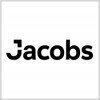
Graduate Engineer Trainee (Get) Interview Questions & Answers
Jacobs Engineering Groupposted on 28 Jun 2022
I applied via Naukri.com and was interviewed in Dec 2021. There were 2 interview rounds.
The test was based on aptitude section and core section(mine was chemical).
(2 Questions)
- Q1. Heat transfer phenomenon
- Ans.
Heat transfer is the movement of thermal energy from one object to another due to a temperature difference.
Heat can be transferred through conduction, convection, and radiation.
Conduction is the transfer of heat through a material without any movement of the material itself.
Convection is the transfer of heat through the movement of fluids.
Radiation is the transfer of heat through electromagnetic waves.
Examples of heat ...
- Q2. Fluid mechanics related formula and details
Interview Preparation Tips
Kaizer Construction Company Interview FAQs
Tell us how to improve this page.
Interview Questions for Popular Designations
- Graduate Apprentice Trainee Interview Questions
- Graduate Apprenticeship Trainee Interview Questions
- Graduate Trainee Interview Questions
- Graduate Engineer Interview Questions
- Production Graduate Engineer Trainee Interview Questions
- Graduate Student Interview Questions
- Graduate Apprentice Interview Questions
- Post Graduate Engineer Trainee [pget] Interview Questions
- Show more
Kaizer Construction Company Graduate Engineer Trainee (Get) Interview Process
based on 1 interview
Interview experience
Graduate Engineer Trainee (Get) Interview Questions from Similar Companies
|
Project Manager
6
salaries
| ₹7 L/yr - ₹12.5 L/yr |
|
Civil Site Engineer
5
salaries
| ₹1.5 L/yr - ₹2.8 L/yr |
|
Account Assistant
4
salaries
| ₹1.4 L/yr - ₹1.6 L/yr |
|
Junior Engineer
3
salaries
| ₹1.8 L/yr - ₹2.5 L/yr |
|
Civil Engineer
3
salaries
| ₹1.5 L/yr - ₹1.9 L/yr |
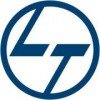
Larsen & Toubro Limited

Tata Projects

Shapoorji Pallonji Group

Hindustan Construction Company
- Home >
- Interviews >
- Kaizer Construction Company Interview Questions >
- Kaizer Construction Company Graduate Engineer Trainee (Get) Interview Questions
